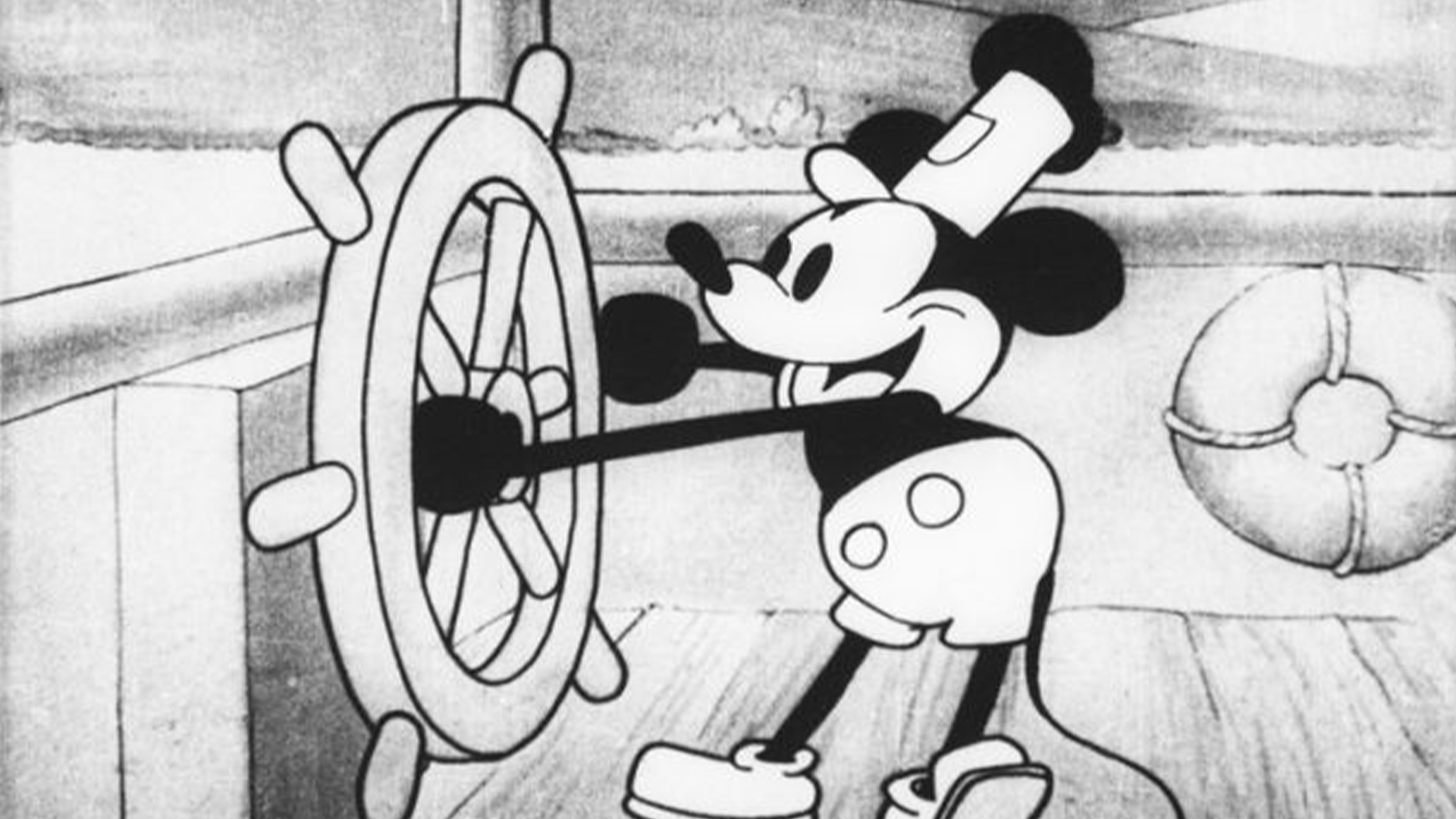
[Simone Del Rosario]
Is kind, innocent Mickey Mouse soon headed for a bloodthirsty, murderous era like his pal, Winnie the Pooh?
It’s the day Disney has dreaded for decades. And spent considerable capital trying to avoid.
Their iconic mascot Mickey Mouse has officially entered public domain.
[Mickey Mouse]
Surprise!
[Simone Del Rosario]
Not that Mickey Mouse. This one.
[Jennifer Jenkins]
“Steamboat Willie, the original Mickey Mouse, is going into the public domain in 2024.”
[Simone Del Rosario]
Jennifer Jenkins is a Duke law professor who writes an annual column the first of every year, a date that is known as “Public Domain Day.”
[Jennifer Jenkins]
“Copyright by design lasts for a limited time. While the copyright is active, it gives the authors, the rights holders, exclusive rights to make copies and to adopt the works. And that’s a very good thing, because it provides economic incentives that spur creativity. But after the term expires, when those works go into the public domain, that’s a great thing too, because that means those works can inspire future creators.”
[Simone Del Rosario]
And what will future creators dream up for Steamboat Willie? The clock starts now after Disney lobbied Congress hard to put off this day as long as it could.
Steamboat Willie was originally set to hit public domain in 1984. But Disney pressed for a 20-year extension to copyright terms, which Congress granted in the ’70s. Then, two decades later, Congress passed The Mickey Mouse Protection Act, which gave Disney another two decades with its star and global ambassador.
Here’s how the law of the land works today. Individual copyrights are protected for that creator’s life plus 70 years. And for corporate works like Disney’s, the copyright is intact for 95 years from publication.
So for 1928’s Steamboat Willie, his number’s been called.
In 2022, another icon of purity entered public domain: the Winnie the Pooh from A.A. Milne’s stories.
[Jennifer Jenkins]
“It’s the original Winnie the Pooh as you encounter that charming little bear in the book from 1926, which has many of the, not just the visual character, but the personality attributes, you know, the humility, the love of honey, the always being there for his friends, right?”
[Simone Del Rosario]
That honey-loving bear got the horror treatment soon after. Winnie-the-Pooh: Blood and Honey featured Christopher Robin’s return to the Hundred Acre Wood where Pooh and Piglet have become murderous psychopaths.
For the first time, Pooh bear is not for kids, but a teacher still screened it to a 4th grade classroom in south Florida. Students asked the teacher to shut it down, and those who were bothered met with a mental health counselor.
When a work of art enters the public domain, everyone has access to the intellectual property.
[Jennifer Jenkins]
“Everything that’s been spawned by Shakespeare, you’ve got Rosencrantz and Guildenstern Are Dead, right, from Hamlet, or you have West Side Story or you have 10 Things I Hate About You and Romeo Must Die and Gnomeo and Juliet and the whole point of the public domain is it enables all these reimaginings.”
[Simone Del Rosario]
And Disney itself has greatly profited off public domain.
[Jennifer Jenkins]
“Snow White, Sleeping Beauty, Cinderella, The Three Musketeers, Christmas Carol, Alice in Wonderland, right, all of these Disney movies were based on public domain works.”
[Simone Del Rosario]
As the mouse behind the house readies for reimagining, it’s important to note the only free-for-all is that 1 928 Steamboat Willie version, the pupil-less mouse with a long tail and a nose that looks more like a rat’s.
Every time Disney tweaks Mickey Mouse’s look, it gets a new copyright and 95 years.
And even when versions inevitably hit public domain, there are serious limitations.
[Jennifer Jenkins]
“I can make my own animation off of it. But I can’t go around slapping Mickey Mouse the character on a backpack or a lunchbox or a pair of pajamas, because people would think it was Disney-licensed merchandise.”
[Simone Del Rosario]
This is where the difference between trademark and copyright law comes in.
[Jennifer Jenkins]
“It’s possible sometimes to have trademark rights, okay, which is a different kind of law over characters. but they And they don’t expire after a set term the way copyrights do. They last for as long as someone is using that character as a brand.”
[Simone Del Rosario]
If the amount of items featuring Mickey Mouse is any indication, Disney’s not worried about that trademark expiring.
The company told the Associated Press in December that ever since his first appearance, “people have associated the character with Disney’s stories, experiences, and authentic products. That will not change when the copyright in the Steamboat Willie film expires.”
[Tigger]
“Hello, I’m Tigger.”
[Simone Del Rosario]
Pooh’s bouncing buddy Tigger also joins Mickey in this year’s list of public domain entries. But for Jenkins, one of the best things about Public Domain Day is not the headline-grabbing works.
[Jennifer Jenkins]
“One of the most exciting things for me about the public domain is all of those works that no one’s thinking about, no one’s heard of that have been completely forgotten after 70, 80, 95 years. Those are the works where the barriers to access have been removed, and they’re waiting to be rediscovered.”











